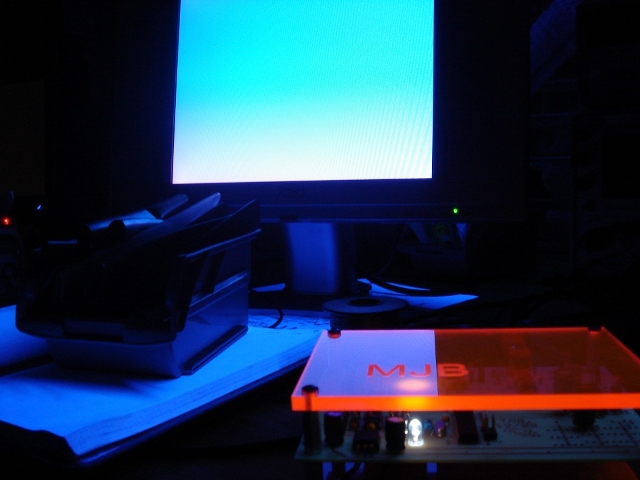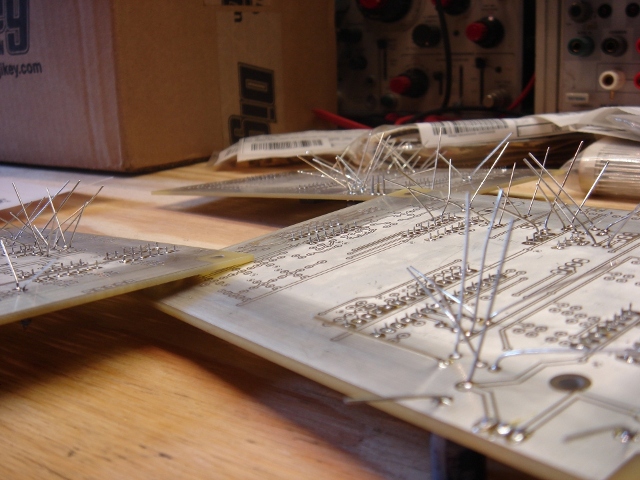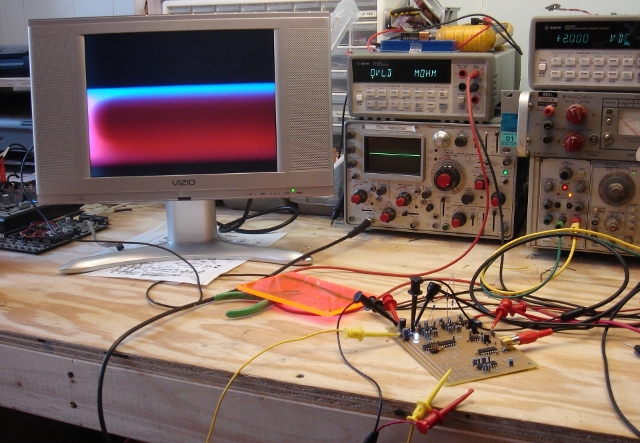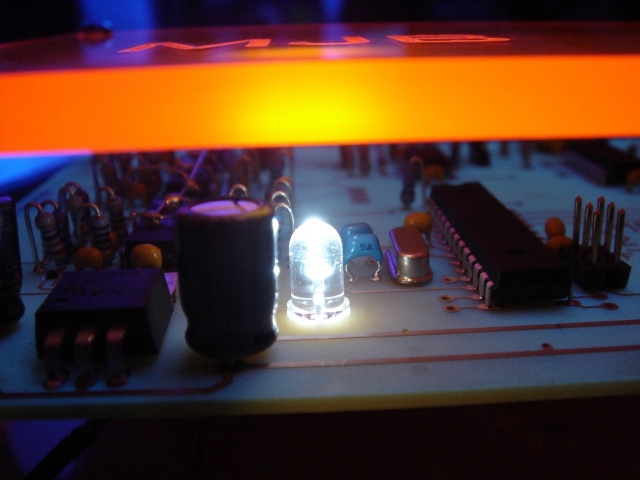I Know What Moms Like
Sunday, December 20th, 2009
Though she probably would have been more interested in a Steven King book and some Calphalon pots, I decided to build a video synthesizer for my Mom for Christmas. I also built one for my girl, who is generally more into blacklights than mom and one for me, because, you know, ho ho ho.


There were lots of reasons to do this. Partially because I think it’s cool to give gifts you make and less altruistically because I was still geeked about the little varactor synth that I’d made and wanted to do a new revision of it.

This synth still generates all the housekeeping signals with an AVR (as well as the colorburst) and switches them around with a 4051 multiplexer. However, it adds a clamp circuit which allowed control of color saturation (the old version was fully saturated color all the time) and a DC offset circuit which controlled brightness (that knob was also at 11). Those circuits worked _OK_ but not great, and I found I generally liked the results when everything was full out. There’s also an option to invert the color carrier, which WAS cool, in an epileptic kind of way. The sync signals on this guy were not _quite_ at the right levels either.


The idea is basically the same as the last varactor synth; except there are now multiple stages of RC phase shift. Each stage uses a SMV1255 “Hyperabrupt Junction Tuning Varactor” as the cap in that RC which is driven by a control voltage. Each stage is also buffered by an XOR gate, to square the signal back up after passing through the RC. One thing I also screwed up in this design was running the chain of buffers NON-INVERTING. This meant that with big phase shifts (which also meant big attenuation from the filter) the color carrier would eventually disappear, I assume because of the asymmetrical thresholds in the gates. On a scope you’d just see the duty cycle getting farther and farther from 50% and then just disappear entirely. The big solder mess here shows the workaround I did to fix this, which helped. Using comparators would help even more. Using a different circuit topology entirely would prove to be the most helpful….

Still this synth was pretty cool. Because it was for Moms and GFs, it was designed to be standalone and not require any inputs. There’s a little prototyping area where I made some function generators to make repetitive waveforms to drive the various color stuff.
xo
TB
